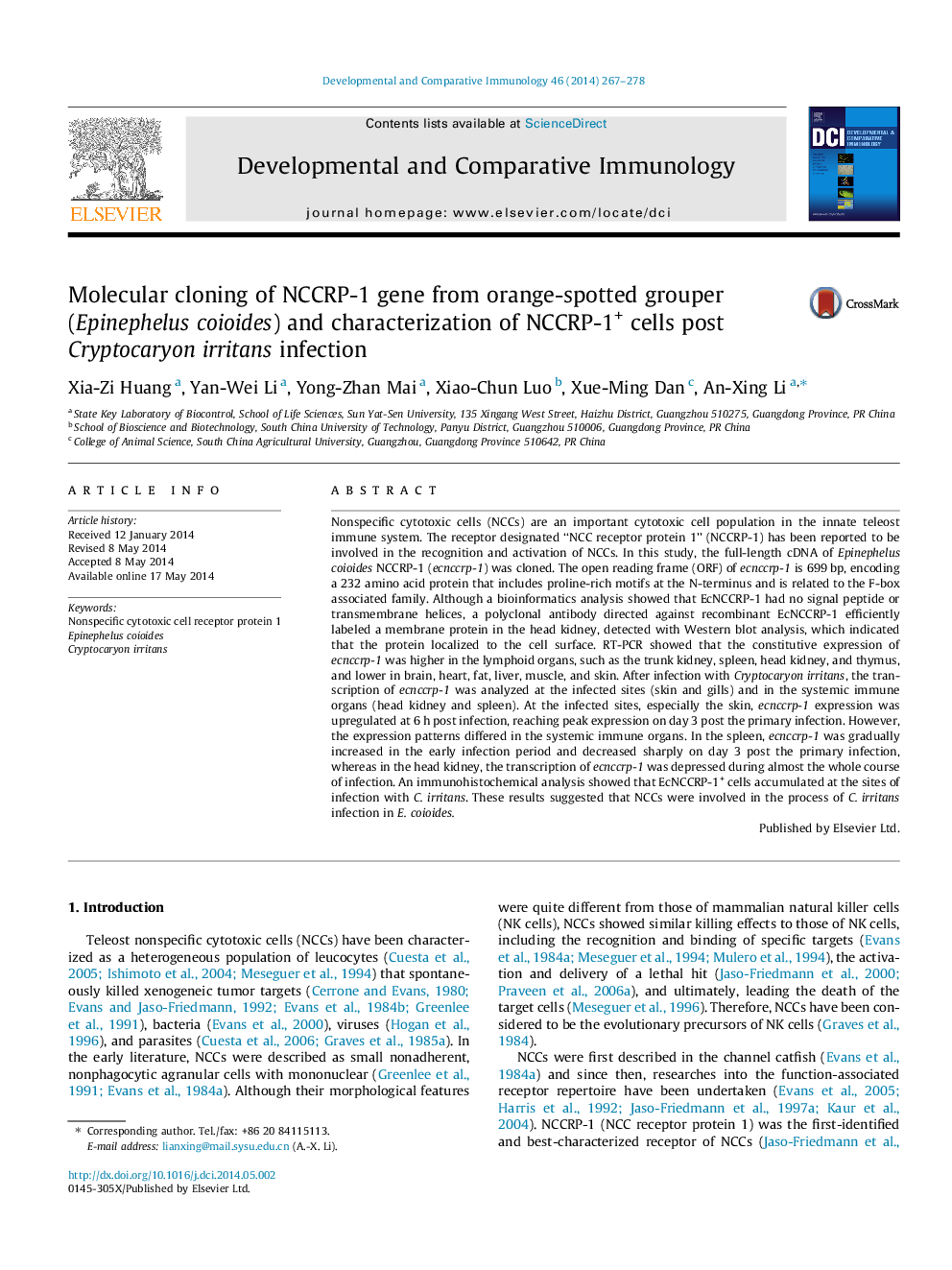| کد مقاله | کد نشریه | سال انتشار | مقاله انگلیسی | نسخه تمام متن |
|---|---|---|---|---|
| 2429141 | 1106479 | 2014 | 12 صفحه PDF | دانلود رایگان |

• Ecnccrp-1 cDNA was firstly cloned from orange-spotted grouper.
• Ecnccrp-1 gene was constitutively expressed in all examined tissues.
• Expression of EcNCCRP-1 was regulated by C. irritans infection.
• NCCs may participate in grouper anti-C. irritans infection.
Nonspecific cytotoxic cells (NCCs) are an important cytotoxic cell population in the innate teleost immune system. The receptor designated “NCC receptor protein 1” (NCCRP-1) has been reported to be involved in the recognition and activation of NCCs. In this study, the full-length cDNA of Epinephelus coioides NCCRP-1 (ecnccrp-1) was cloned. The open reading frame (ORF) of ecnccrp-1 is 699 bp, encoding a 232 amino acid protein that includes proline-rich motifs at the N-terminus and is related to the F-box associated family. Although a bioinformatics analysis showed that EcNCCRP-1 had no signal peptide or transmembrane helices, a polyclonal antibody directed against recombinant EcNCCRP-1 efficiently labeled a membrane protein in the head kidney, detected with Western blot analysis, which indicated that the protein localized to the cell surface. RT-PCR showed that the constitutive expression of ecnccrp-1 was higher in the lymphoid organs, such as the trunk kidney, spleen, head kidney, and thymus, and lower in brain, heart, fat, liver, muscle, and skin. After infection with Cryptocaryon irritans, the transcription of ecnccrp-1 was analyzed at the infected sites (skin and gills) and in the systemic immune organs (head kidney and spleen). At the infected sites, especially the skin, ecnccrp-1 expression was upregulated at 6 h post infection, reaching peak expression on day 3 post the primary infection. However, the expression patterns differed in the systemic immune organs. In the spleen, ecnccrp-1 was gradually increased in the early infection period and decreased sharply on day 3 post the primary infection, whereas in the head kidney, the transcription of ecnccrp-1 was depressed during almost the whole course of infection. An immunohistochemical analysis showed that EcNCCRP-1+ cells accumulated at the sites of infection with C. irritans. These results suggested that NCCs were involved in the process of C. irritans infection in E. coioides.
Journal: Developmental & Comparative Immunology - Volume 46, Issue 2, October 2014, Pages 267–278